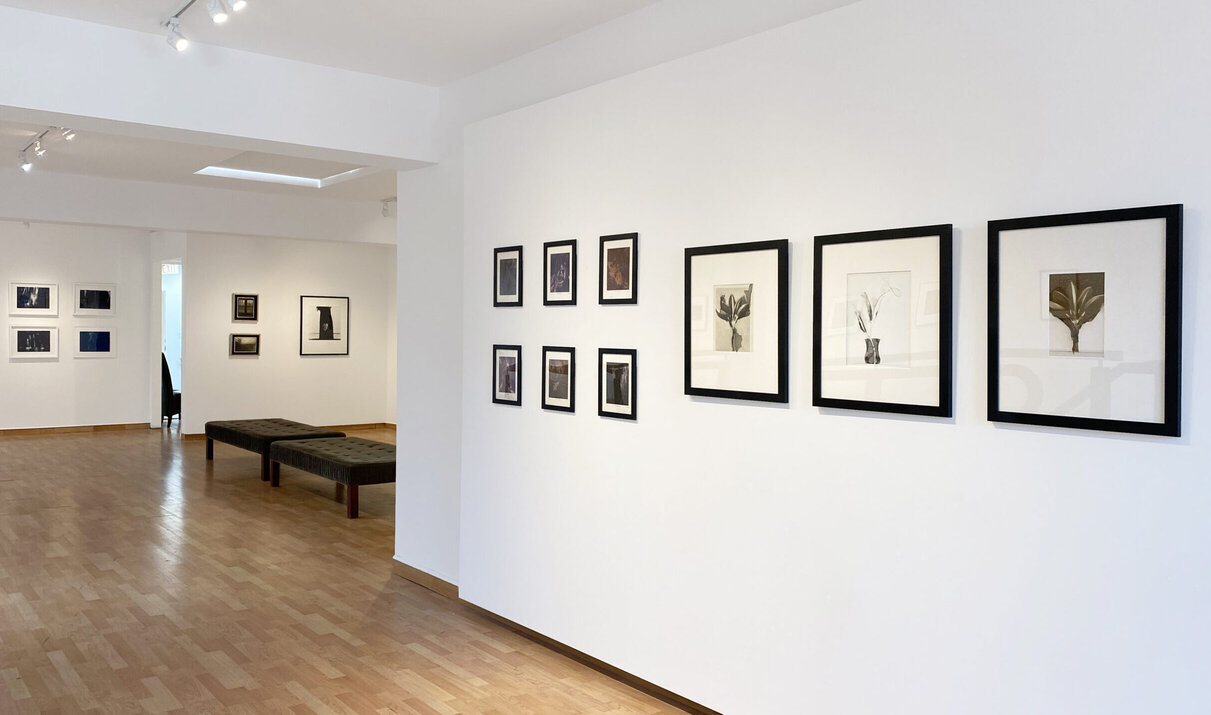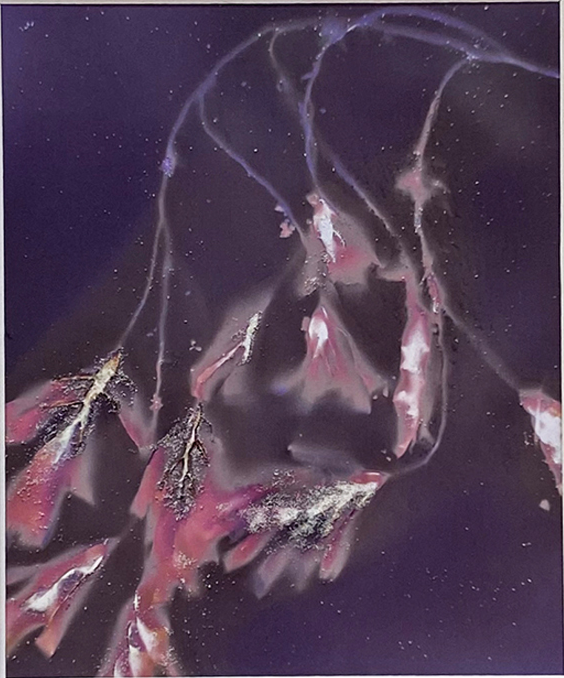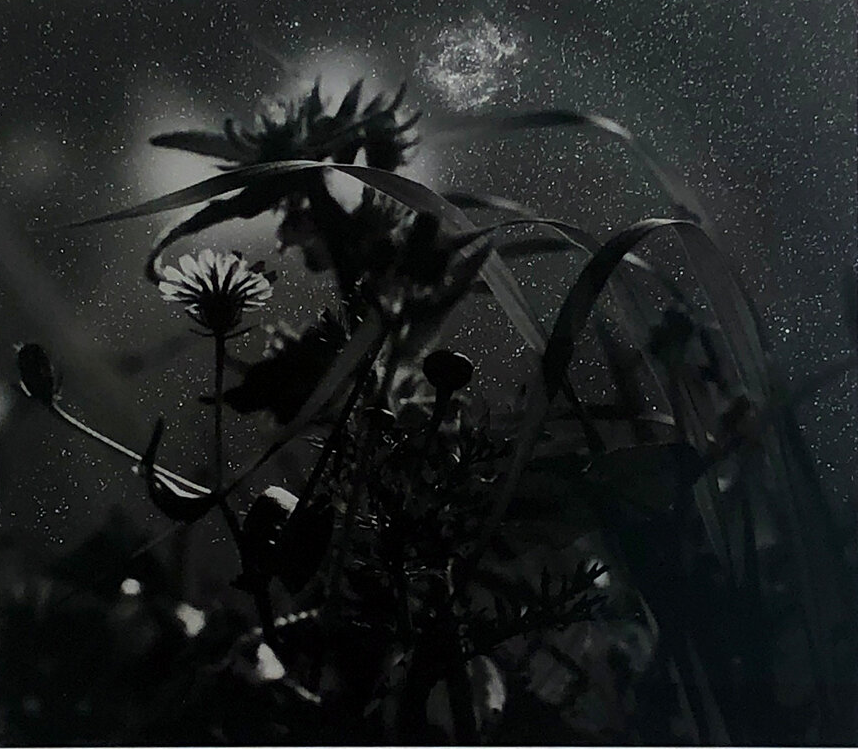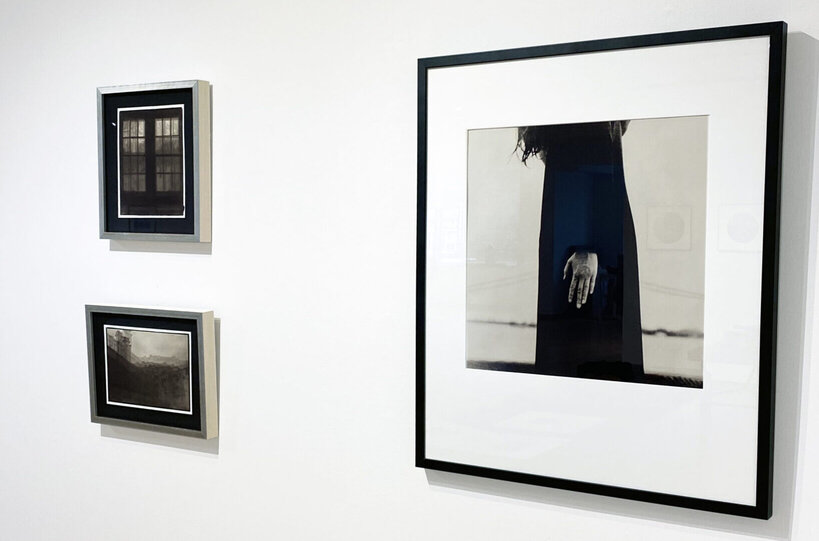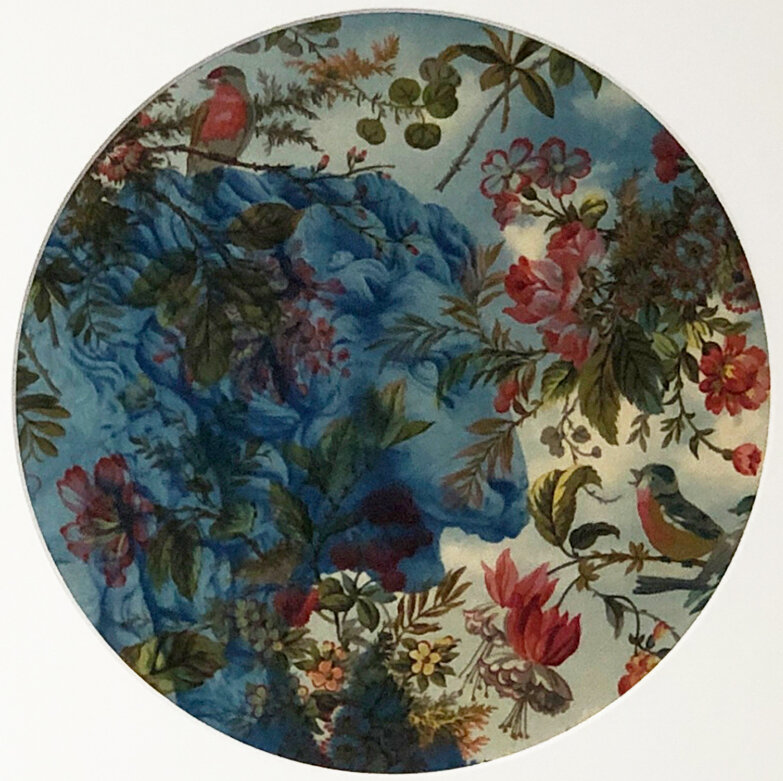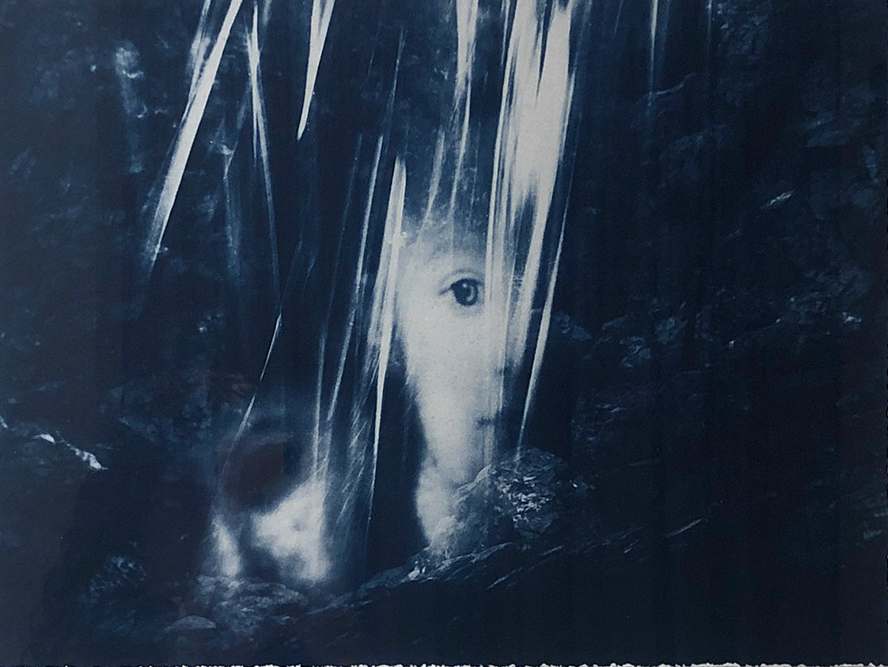Upstairs at Lonsdale Gallery, in a spacious and light-filled room, are displayed the photographic work of ten artists who hail from various corners of the globe. They are Jennifer Crane, Sandra C. Davis, Kristin Diemer, Neil Folberg, Osheen Harruthoonyan, Jeannie Hutchins, Kit Martin, Senga Peckham, Rachel Scheinfeldt and Amanda Tinker. The curator, Simone Rojas-Pick, explains that the inspiration for the idea of the show derives from the feelings we have experienced emerging from lockdown after the first wave of the pandemic. She likens the experience to that of having recently woken up from a long dream, after which everything is perceived afresh. The mundane suddenly seems magical. The pieces she has selected for the show hint at this feeling.
Installation view with Kristin Diemer’s Transformation series, 2017, each silver gelatin, mordancage unique print, ed. 1/1, 22 x 19 inches (R)
None of the many photographs on display could be called functional, namely straightforward recordings of the environment or events. Rather the emphasis is on photographic methods, especially on printing processes, as well as digital manipulation of imagery. For example, Peckham places seaweed on light sensitive paper, which is then exposed to sunlight. The UV light reacts with the base-chemicals in the paper, fixing them. Then a chemical wash is applied to the paper which produces various colours in the print, while washing away the base-chemicals that lay under the seaweed unexposed and therefore unfixed. The results are beautiful ghostly images. This process is known as lumen printing.
Senga Peckham, Tidal Wash #6, 2018, giclee print of unfixed lumen, ed. 1/2, 10 x 8 inches
Another printing technique used by several artists is cyanotype. A mixture of chemicals is brushed onto the surface of paper or fabric. Then either a negative or some opaque objects, e.g., flowers, are placed on the now light-sensistive surface. The paper turns blue in the uncovered areas when it is subsequently exposed to sunlight. The print is finally washed in water to fix it. All the artists selected either use some such printing technique or manipulate photographic images using digital software. In the latter case, for example, Folberg – a former student of Ansel Adams – digitally inserts an image of the night celestial sky behind a standard landscape, which enables the viewer to see the scene as if ‘standing at the edge of an infinite universe’, as Rojas-Pick puts it.
Neil Folberg, Rosette Nebula, 2001, archival pigment print on Baryta Paper, ed. 3/49, 19 x 20 inches
The one thing, therefore, that unites this otherwise diverse group of artists is their preoccupation with the processes of making an image using photographic technologies, both old and new. Their practices all stand in the grey area that intersects photography and painting, where ‘painting’ is used very broadly here to refer to any technique of image making that involves the direct intervention of the artist, rather than involving an automated mechanical process. Each of these artists’ practices use a combination of painting and photography in this sense.
Installation view with Jennifer Crane, View From My Window (Home and away), 2019, both palladium print, ed. 1/3 (L) & Osheen Harruthoonyan, Hand 2009, toned silver gelatin print, ed. of 5, 32 x 27 inches (R)
As Susan Sontag notes, in her essay Photographic Evangel, there is a tension in the idea of photography being shown in a gallery, i.e., as art. Traditionally the role of the photographer, as Sontag explains, is ‘recessive in much of serious picture-taking and virtually irrelevant in all the ordinary uses’. The photographer – understood as someone who uses photographic technology to make images – is not an auteur in the same way as a painter is. The photographer’s mark is more anonymous. What the artists in this show are doing effectively is to push back against the notion that photography-based art is not creative in the way that painting is.
Sandra C. Davis, Continental Lion, 2019, cyanotype on printed cotton, ed. 2/8, 16 x 16 inches
At times some of these artists are painting with the light and chemistry of photography. For example, Davis and Hutchins (based in Philadelphia and Maine respectively) use a technique known as gum bichromate printing. This process involves combining a gum with standard paint, e.g., gouache, and a light sensitive chemical fixative. Using one colour at a time they then expose the paper, with a negative image on top, to sunlight. The exposed areas are fixed, retaining the chosen colour. Davis does this four to six times for each print, while Hutchins does this technique over cyanotype prints. The results in both cases are beautiful subtlely coloured prints, which merit being called paintings.
Jeannie Hutchins, Sisters (Blue Series), 2018, gum bichromate over cyanotype, ed. 1/5, 17 x 22 inches
It is interesting to note that the subjects of nearly all the photographs in the show are secondary. That’s to say, they are primarily concerned with formal qualities rather than content. In this sense they are for the most part abstract or quasi-abstract works. This helps to explain their dream-like quality on which Rojas-Pick focuses. There is in all of them a sense of mood over narrative. They are, one might say, studies in the aesthetic possibilities of the techniques. It would be intriguing to see such experimental techniques applied to more narrative works. At any rate, this is a fabulous collection of photographic works, artfully curated and arranged. It is well worth going to see.
Hugh Alcock
Images are courtesy of Lonsdale Gallery
*Exhibition information: Awaken After a Long Dream, October 15 – December 15, 2020, Lonsdale Gallery 2nd floor, 410 Spadina Rd, Toronto. Gallery hours: Tue – Sat 10am – 5pm or by appointment

